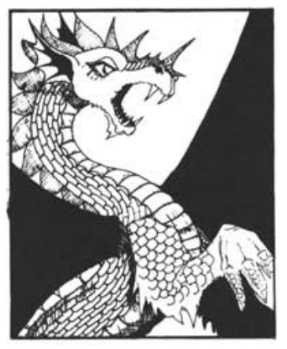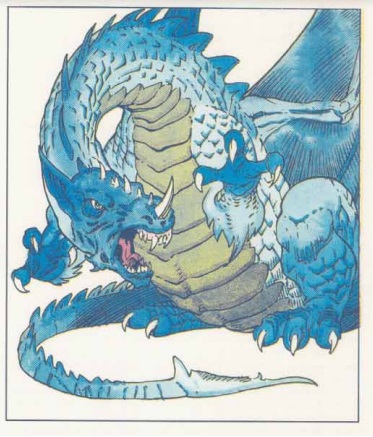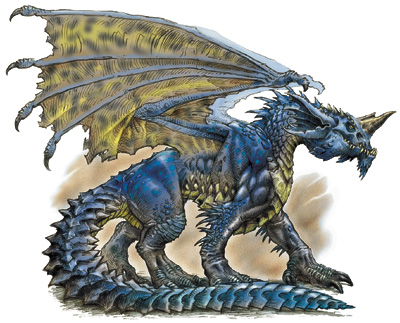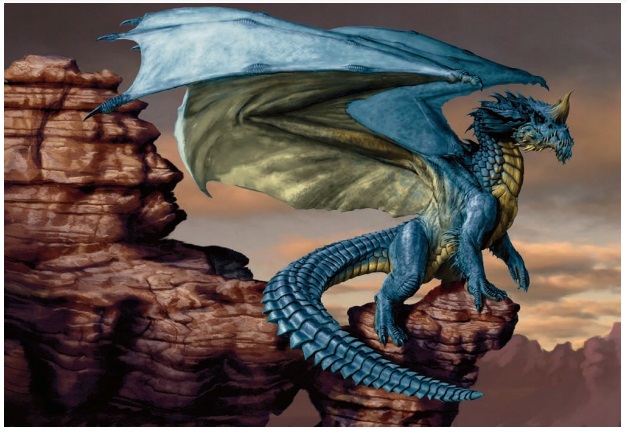Monster Spotlight: Blue Dragons They’re Electric Boogiewoogiewoogie
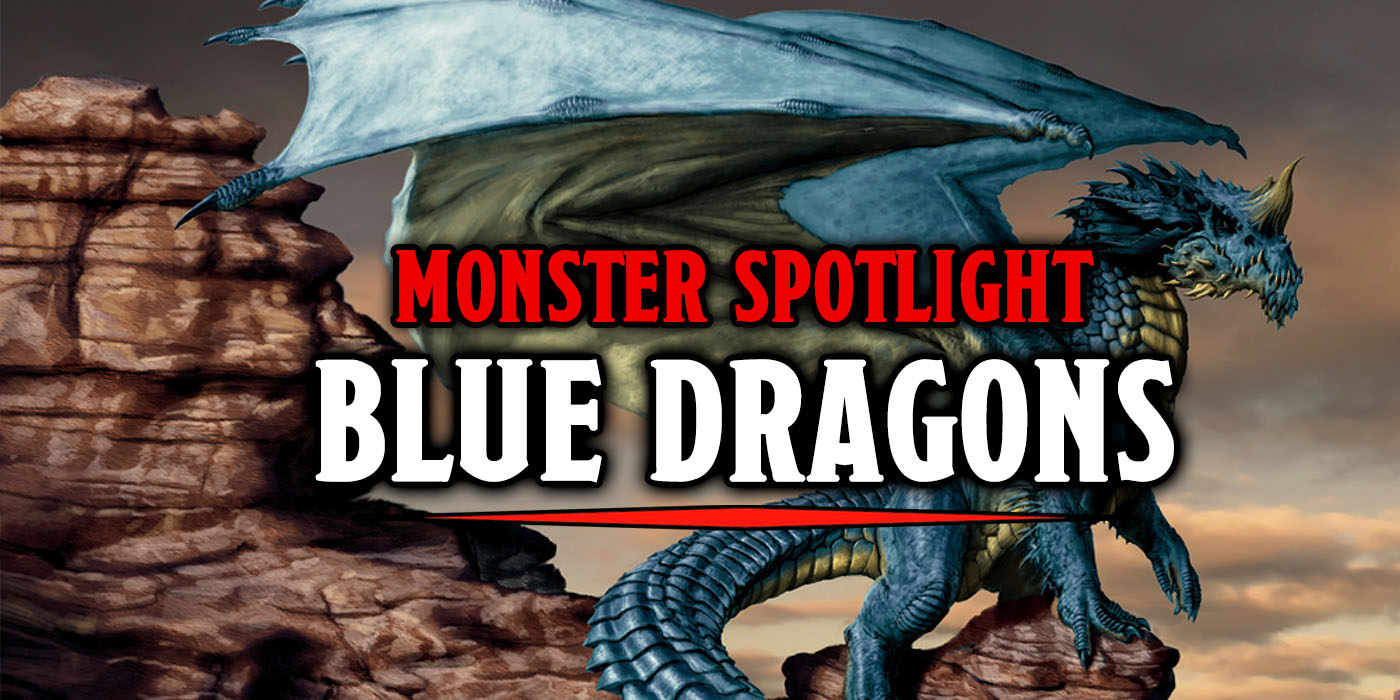
Blue dragons are equally likely to shoot lightning at you from the sky or jump up at you from beneath the sand but rest assured they always want to eat you.
Blue Dragons are one of the more interesting types of Dragons in D&D. They have to stand on their own a little–while Green and Red Dragons have their own sort of ties to common mythology, but dragons that breathe lightning and live in the deserts or on rocky cliffs? These desert dragons have to carve out their own niche in the cultural landscape. But so they did, starting in 1st Edition where these horned dragons looked like something you’d expect to see on a tapestry…
First Edition
The blue variety of dragon likes to keep to arid or desert areas, making a home of a large cage or underground cavern. Dragons with the ability to speak can use spells and magic, but they don’t accumulate spell levels particularly quickly and a DM would chose their spell randomly by rolling a die. They can use the standard collection of claw and bite attacks, but blue dragons also have an electric bolt producing breath weapon.
Second Edition
Second edition makes it clear that blue dragons are intelligent enough to form an execute strategies for a most effective battle plan including using their coloration to their advantage to blend in with the desert sky and attacking from a distance and utilizing their electric breath weapon and special hallucinatory ability. Blue dragons are also especially territorial, spending most of their days watching over their desert-view property, ready to fight off any trespassing dragon hunters or brass dragons who try to make their home in the same general locations as their blue cousins.
Third Edition
Many aspects of the blue dragon don’t change between the second and third editions, sprinkles of flavor text in a block of much the same information. Though knowing that the like to dig in the sand and will sometimes attack from underground instead of above are very good additions to blue dragon lore. The terror of having a dragon come up from beneath the ground like a sand worm has a lot of in-game potential, but it is also a very funny mental image to imagine a giant horned dragon digging up sand like an overexcited dog at a playground. 3E does add “Create/Destroy Water” to the blue dragon’s magical repertoire, a spell that could destroy water and spoil liquids containing water, and imitate any voice or sound it hears like a horrible giant parrot.
Fourth Edition
4E Switches blue dragons up quite a bit in the first sentence alone, moving them from arid desert climates to coastal caves that aren’t easily accessible by land where they can prey on ships. Much of the rest of them remains the same, but that makes this difference feel so unnecessary and lazy; like they’ve been moved to the ocean just because they’re blue. Blue dragons are also a bit more personable in fourth edition, forging tentative alliances with sahuagin and storm giants and sometimes becoming the chosen mount of dragonborns.
Fifth Edition
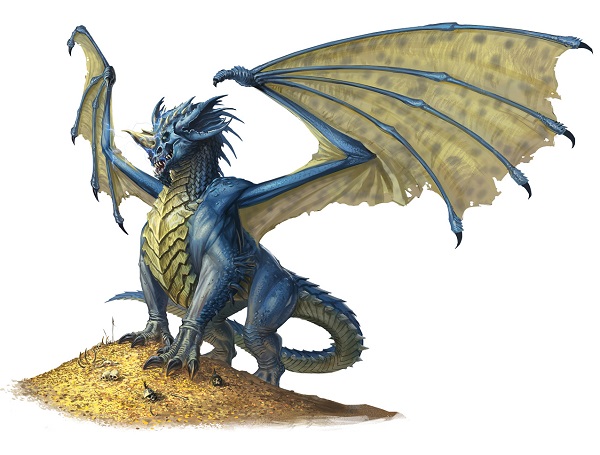 By fifth edition blue dragons come into their own with minions to “reinforce their sense of superiority,” lair actions that include 5 foot wide lightning arcs, and regional effects which include raging thunderstorms and hidden sinkholes. 5E also adds the concept of blue dragons eating cacti in a pinch, but enjoying meat that has been “cooked” with their lightning breath and having them hunt by burying themselves in the sand and jumping out to surprise and trap their victim. One thing that has never changed about blue dragons is how smart and tactical they are.
By fifth edition blue dragons come into their own with minions to “reinforce their sense of superiority,” lair actions that include 5 foot wide lightning arcs, and regional effects which include raging thunderstorms and hidden sinkholes. 5E also adds the concept of blue dragons eating cacti in a pinch, but enjoying meat that has been “cooked” with their lightning breath and having them hunt by burying themselves in the sand and jumping out to surprise and trap their victim. One thing that has never changed about blue dragons is how smart and tactical they are.
Have you encountered a dragon during D&D? Which kind of dragon is your favorite? Would you become one of the blue dragon’s minions? Let us know in the comments!
Happy Adventuring!

